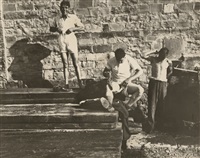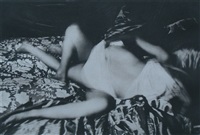Henri Cartier-Bresson
(French, 1908–2004)
Biography
Most Expensive Artwork Sold at Auction
Derrière la gare Saint-Lazare, Paris, 1932
Sold price: 596,583 USD

Henri Cartier-Bresson
Roosevelt Island, New York, USA, 1962
OstLicht. Gallery for Photography
2,200 EUR

Henri Cartier-Bresson
Joinville-le-Pont, Département Val-de-Marne, , 1938
OstLicht. Gallery for Photography
1,900 EUR

Henri Cartier-Bresson
Wedding, Rue de Turenne, Le Marais, Paris, 1951
OstLicht. Gallery for Photography
1,900 EUR





















